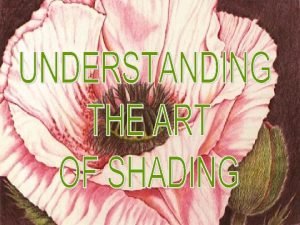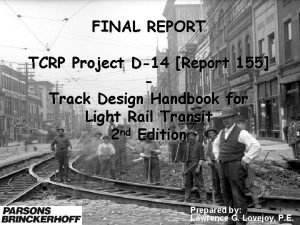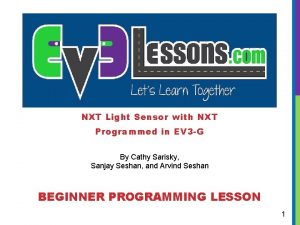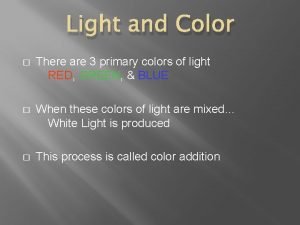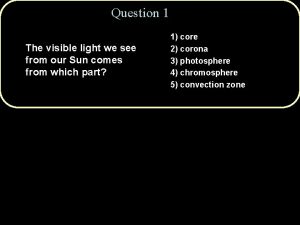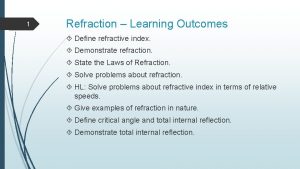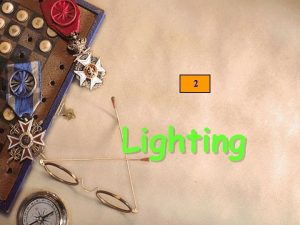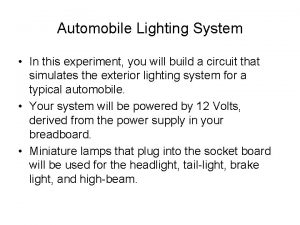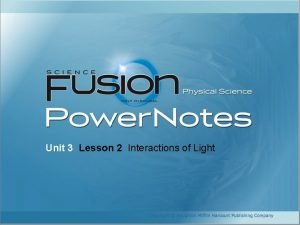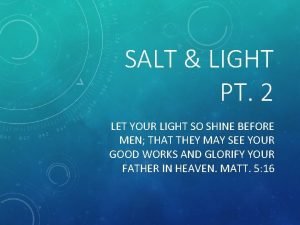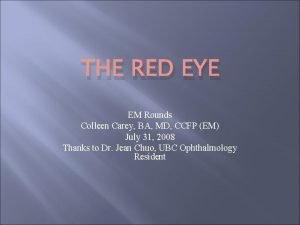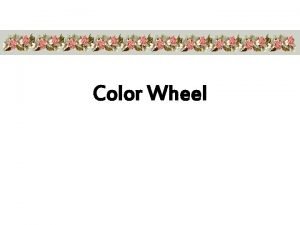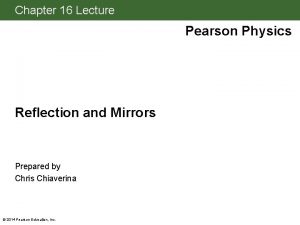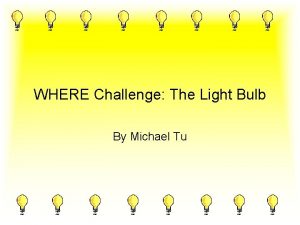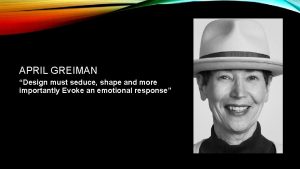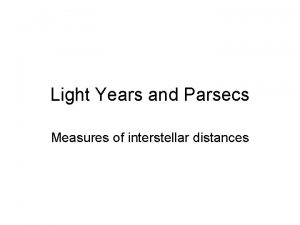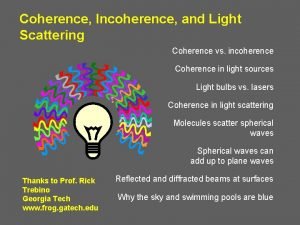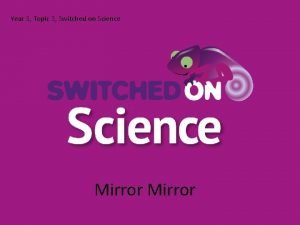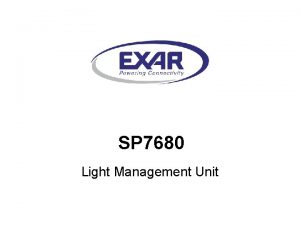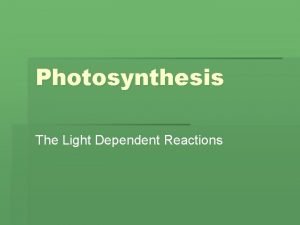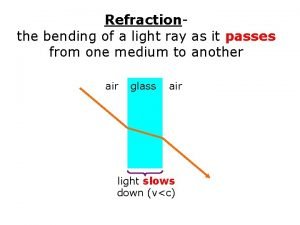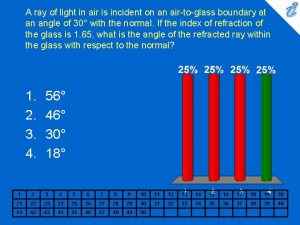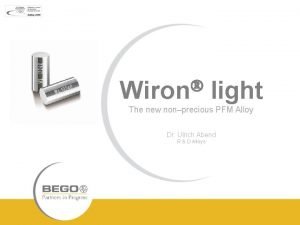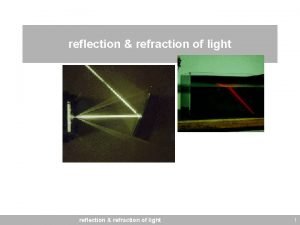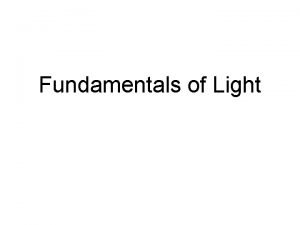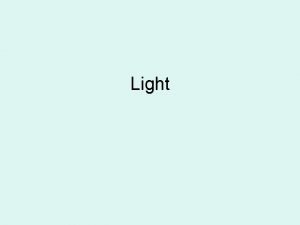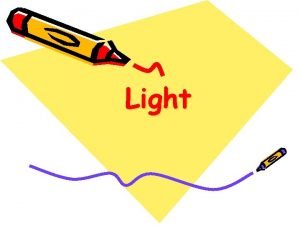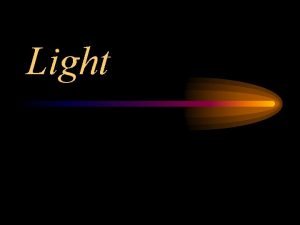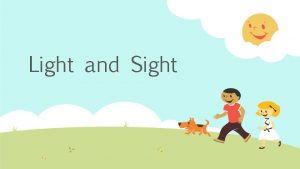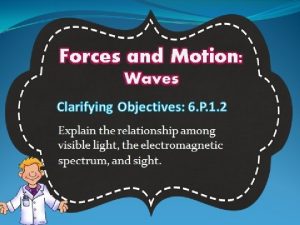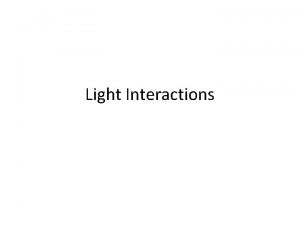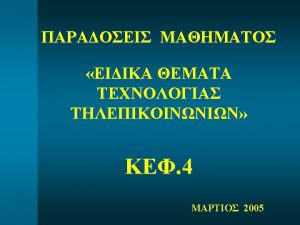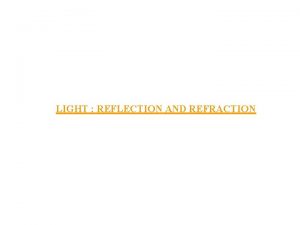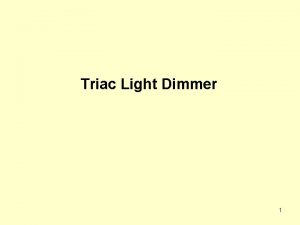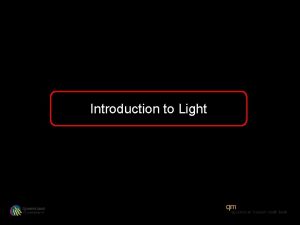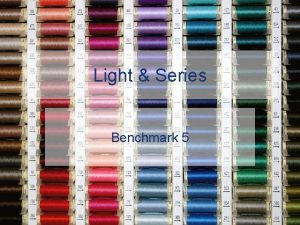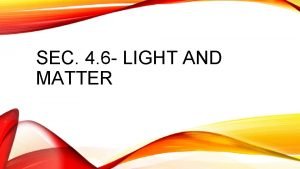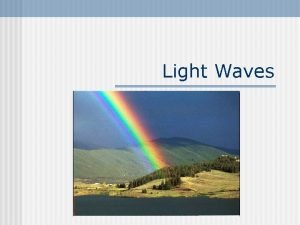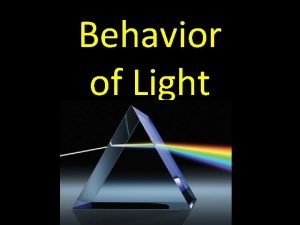LIGHT n n 4 5 1 4 5






































- Slides: 38

LIGHT n n 4 -5. 1 4 -5. 2 4 -5. 3 4 -5. 4

The basic properties of light are: n n n Brightness Colors Being visible

Brightness: n The intensity of light (or brightness) is related to the amount of light being seen

Brightness: n The closer the source of light is, the greater intensity or degree of brightness

Brightness: n The greater the distance the source of light is, the lesser the intensity or brightness

Colors: n Light or “white light”, is made up of all colors of light mixed together

Colors: n If white light is passed through a prism, it can be separated into light of different colors

Colors: n The colors are: n n n n Red Orange Yellow Green Blue Indigo Violet THESE are the COLORS of the Rainbow!

Visible: n In order for an object to be visible, it must either give off its own light (be a source of light) or it must reflect light

Visible: n The sun, a candle flame, or a flashlight gives off visible light

Visible: n The moon and many objects around us reflect light in order to be seen

Light is a form of energy and is made of many colors

Energy: n Energy is the ability to make something move, happen or change

Colors: n The different colors of light are revealed when white light is passed through a prism and separated into different colors of the rainbow, called a spectrum

Colors: n These colors are related to the different amounts of energy in white light

Colors: n Each color represents a different amount of energy

Light travels in a straight line away from the light source. It can travel through transparent material or even any empty space.

The way light reacts when it strikes an object varies with the object.

Reflection: n When light is reflected, it bounces back from a surface

Reflection: n Reflection allows objects to be seen that do not produce their own light

Reflection: n When light strikes an object, some of the light reflects off of it and can be detected by the eye

Reflection: n When light strikes a smooth, shiny object, for example a mirror or pool of water, it is reflected so that a reflection can be seen that looks very similar to the object seen with light reflected directly from it

Reflection: n The color of the light that is reflected from an object is the color that the object appears. For example, an object that reflects only red light will appear red

Refraction: n n When light is refracted it passes from one type of transparent material to another, and changes directions For example, when light travels through a magnifying glass, it changes direction and we see a larger, magnified view of the object

Refraction: n n When a straw is viewed in water, light passes from the water to the air causing the path of the light to bend. When the light bends, the straw appears distorted (bent or broken)

Absorption: n n When light is absorbed it does not pass through or reflect from a material It remains in the material as another form of energy

Absorption: n The colors of objects are determined by the light that is not absorbed but is reflected by the objects

Absorption: n All other colors of light striking the object are absorbed by the object

Absorption: n A red object, for example, reflects red colors of light and absorbs all other colors

Light behaves differently when it strikes different objects

Transparent: n A transparent material allows light to pass through it because it is not absorbed or reflected

Transparent: n Objects can be seen clearly when viewed through transparent materials

Transparent: n Air, glass, and water are examples of materials that are transparent

Translucent: n A translucent material scatters or absorbs some of the light that strikes it and allows some of the light to pass through it

Translucent: n Objects appear as blurry shapes when viewed through translucent materials

Translucent: n Waxed paper and frosted glass are examples of materials that are translucent

Opaque: n An Opaque material does not allow light to pass through, light is either reflected from or absorbed by an opaque material Can you determine which of these 4 is opaque? ?

Opaque: n Wood, metals, and thick paper are examples of materials that are opaque
 Light light light chapter 23
Light light light chapter 23 Into the light chapter 22
Into the light chapter 22 Chapter 22
Chapter 22 Materials that do not block light
Materials that do not block light Put out the light and put out the light
Put out the light and put out the light Difference between light dependent and light independent
Difference between light dependent and light independent The bouncing off of light
The bouncing off of light Shading light to dark
Shading light to dark Switch light os
Switch light os Tcrp report 155
Tcrp report 155 Lion king everything the light touches script
Lion king everything the light touches script Light sensor
Light sensor The 3 primary colors of light
The 3 primary colors of light The visible light we see from our sun comes from which part
The visible light we see from our sun comes from which part Learning objectives of refraction of light
Learning objectives of refraction of light Light sources found indoors
Light sources found indoors Light bulb multisim
Light bulb multisim It is summer light
It is summer light Light matter and color lesson 1
Light matter and color lesson 1 The light pt 2
The light pt 2 What is this
What is this Colour wheel light
Colour wheel light Trevor spends 45 minutes a day in front of an intense light
Trevor spends 45 minutes a day in front of an intense light Openday light
Openday light Romeo and juliet plot
Romeo and juliet plot Reflection of light example
Reflection of light example The light bulb challenge
The light bulb challenge Integrigation
Integrigation How to find absolute magnitude from apparent magnitude
How to find absolute magnitude from apparent magnitude Light microscope vs electron microscope
Light microscope vs electron microscope Scattering of light definition
Scattering of light definition Who made
Who made Light management unit
Light management unit Light dependent reactions formula
Light dependent reactions formula Light energy definition
Light energy definition Light bending towards the normal
Light bending towards the normal A ray of light in air is incident
A ray of light in air is incident Criteri di light ascite
Criteri di light ascite Wiron light
Wiron light







